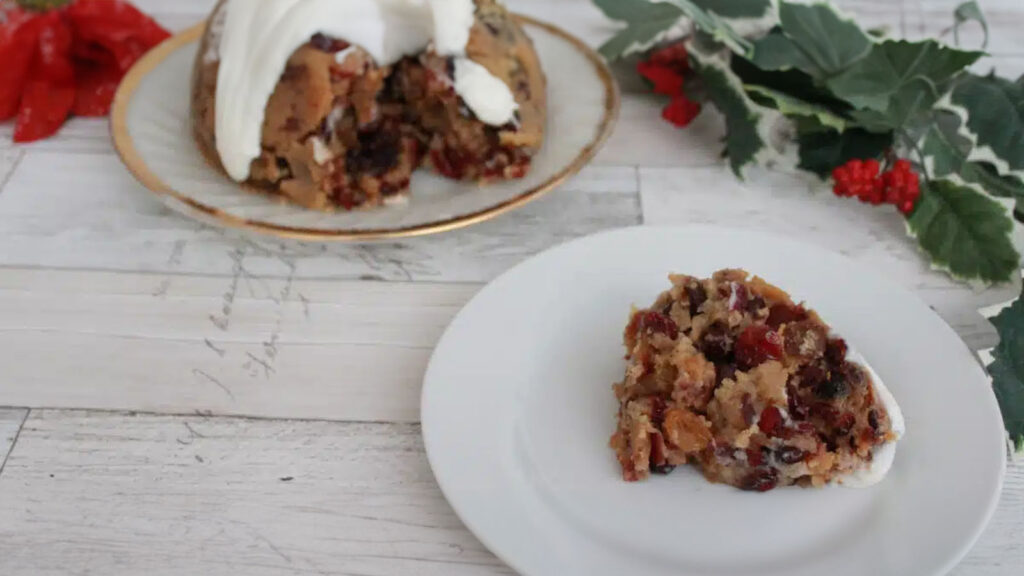
Many of the recipes I post here on this blog are quick and/or easy. This one is mostly easy, but definitely not quick. You basically need to plan on being home all day to tend it. I boiled mine for about 7 hours before I took it out. It cracked a bit upon unmolding, as you can see. They can be tricky to unmold, but with a little nudging and patience it should come out just fine. If you end up with some cracking, just add some icing or powdered sugar to cover it. Or just let it be and say it is what it is. It’ll still taste the same.
You can use a steamed pudding mold if you have one. I have one, but I opted to not use it for this pudding because I wanted a more traditional plum pudding shape. So I used a glass mixing bowl I have that holds about 4 cups. You can use whatever you want, just make sure it’s heat proof.
Traditionally, puddings of this nature call for suet, which is a hard white fat found on the kidneys of farm animals. That doesn’t really sound appetizing to me, let alone I have no idea where to find some. So in this recipe I’ve used butter instead. I’m sure you could also use shortening if you’d like.
This pudding really is good, by the way. I haven’t talked about the flavor of it yet, but the dried fruits (I used a combination of dried cranberries, dried cherries, and golden raisins) add a nice tartness that blends well with the sugar in the cakey part of it. I topped it with a simple thick glaze (maybe too thick) of powdered sugar and heavy cream. And then, of course (because tradition) a sprig of holly (artificial will do) on top.
Instructions:

Kitchen Kneads is your one-stop shop for quality grains, flour, kitchen appliances, and other ingredients.
We are Utah’s premier baking and cooking resource!
Questions?


Kitchen Kneads is your one stop shop for quality grains, flour, kitchen appliances and other ingredients. We are Utah’s premiere baking and cooking resource! Questions?
888-881-9957
info@kitchenkneads.com
2022 | Kitchen Kneads | All Rights Reserved | Privacy Policy | Terms | XML Sitemap | Site by PDM